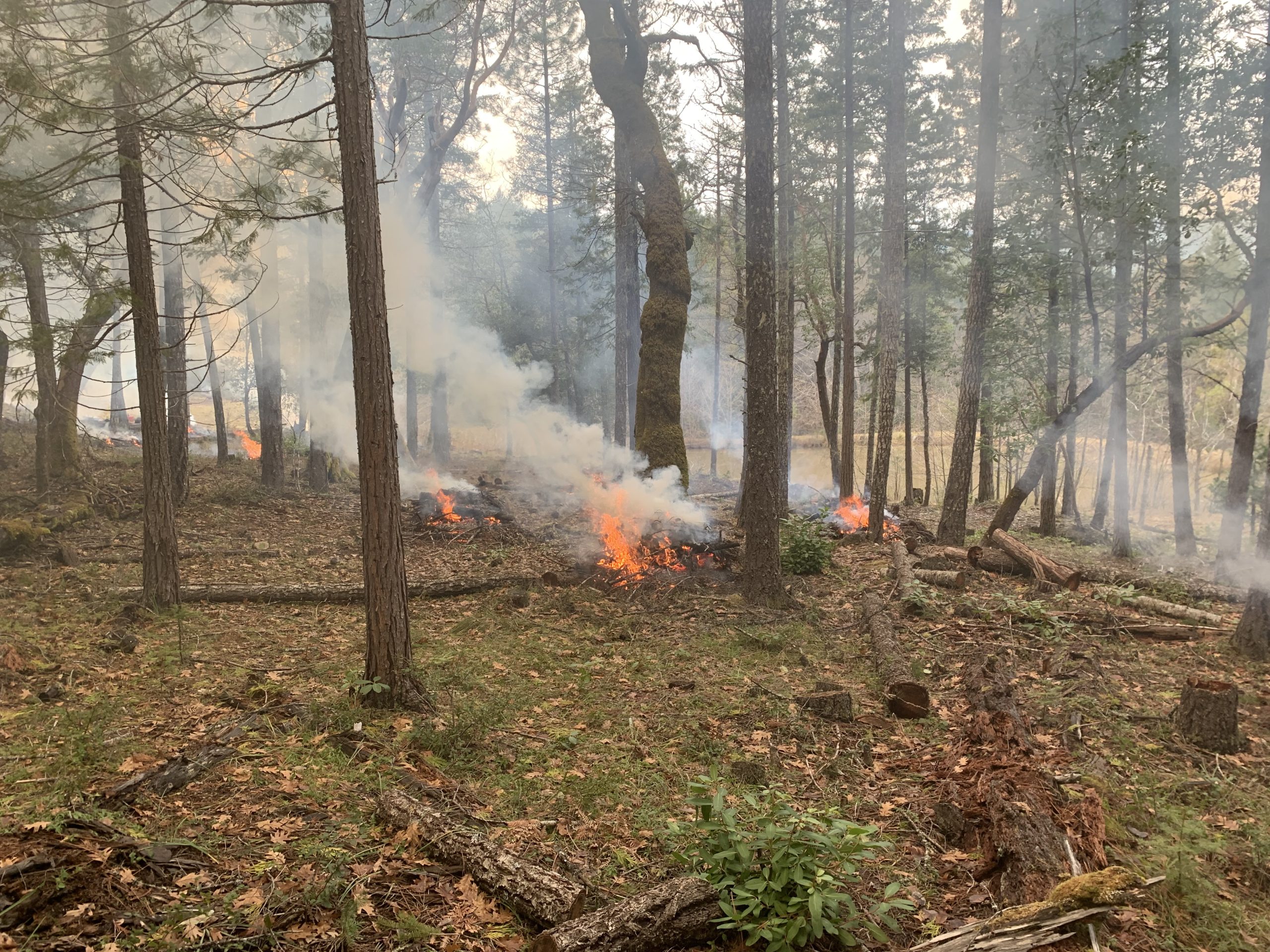Your Forest Update for September 2022
Upper Applegate Watershed Restoration Project
In June, Applegate residents joined the Rogue Forest Partners for a field trip to visit our Upper Applegate Watershed (UAW) project. We explored stops at Charlie Buck, Texter Gulch, and Palmer Gulch in the Applegate Valley to look at projects in the Siskiyou Mountains Ranger District (U.S. Forest Service- Rogue River-Siskiyou National Forest) and Ashland Resource Area (BLM Oregon & Washington Medford District).
The day began with a land acknowledgment by the Forest Service and its representatives in honor of the federal trust, responsibility, and respect that we hold with tribes and ancestral land bases on which we currently work and reside. We recognize that Land Acknowledgment is a necessary step toward honoring Native communities and enacting the much larger project of healing and reconciliation — also recognizing that indigenous people, their tribal governments, and traditional communities are still here.
Throughout the day, we reviewed the need for and use of ecological forest restoration treatments of selective thinning, piling, and burning of hazardous fuels. Partners highlighted the science-based treatments that have already occurred in these areas and others planned for over the next three years. As a project focused on ecosystem health under a Master Stewardship Agreement, any merchantable timber removed as the by-product of ecological thinning will be sold to local mills. Since this is a deficit sale, any revenue generated will help to pay for the work of removing the timber and getting it to the mill.
As the field tour progressed, we also discussed the importance of scientific monitoring of this project and the value of utilizing bird surveys with our partners at Klamath Bird Observatory to determine the short and long-term positive and negative impacts on specific avian species. This information serves as a key indicator of habitat health and will help guide us with best science practices as we continue with our forest restoration treatments.
If you missed this one, fear not! We plan for additional community field trips to take a closer look at other project areas in the future. Be sure to join the Rogue Forest Partners’ newsletter list:
What’s going on in the woods?
As the spring prescribed fire season came to a close, crews from lead implementation partner Lomakatsi Restoration Project and contract forestry services providers continued ecological thinning and piling treatments on private and public lands. At the time of this writing, crews are beginning their annual transition from ecological fuels reduction to wildfire response. Lomakatsi’s 20-person hand crew and Type 6 engine received their first wildland fire assignments.
In the Applegate, Rogue Forest Partners exchanged chainsaws for notepads as our restoration planning, and monitoring committees used the hotter, drier months to revisit restoration objectives. Lomakatsi’s technical forestry team laid out project boundaries, conducted pre-implementation monitoring, and drafted all prescriptions for 1,000 acres of ecological fuels reduction on USFS land.
As the cooler, wetter months of Fall arrive, restoration crews will return to the forests to continue ecological thinning and prescribed fire. This Fall, operations will include:
- Pile burning on BLM land in our Williams project area.
- 1000+ acres of private land treatments in our West Bear project area.
- 300+ acres of ecological fuels reduction in and around the community of Jacksonville.
We are grateful for all the forestry services professionals who work day-in and day-out to make forests healthier and communities more resilient. We wish those working in wildland fire a safe fire season!
Photo: Lomakatsi conducts a controlled pile burn in the Williams Project area to enhance wildlife habitat, protect large legacy trees, and reduce the risk of severe wildfire to the community.

